

Damion Smy
China introduces “no fire, no explosion” EV battery standards
30 Minutes Ago
Don't want an SUV? Check out these high-performance sedans instead. The prices are similar, but the BMW M550i xDrive Pure and Audi S6 take different approaches.

Contributor
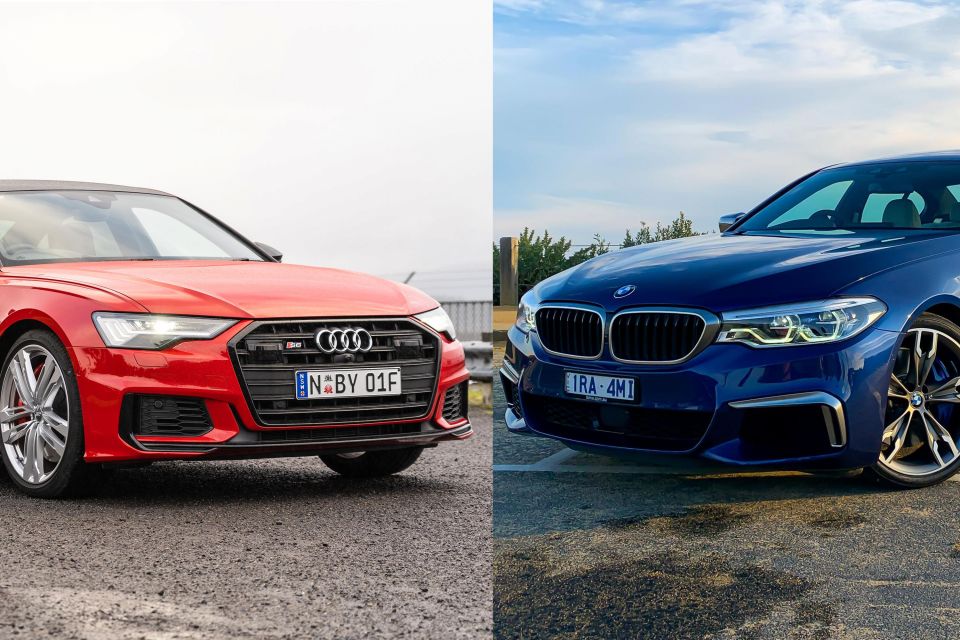

Contributor
So you want a big, powerful sedan.
First up, nicely done. The masses are looking at pumped-up performance SUVs at the moment, but classic three-box sedans haven’t gone anywhere.
Secondly, you’ve got a decision to make. Just under $150,000 before on-roads will buy you a BMW M550i xDrive with a 4.4-litre turbocharged V8 engine, classic sedan styling, and all-wheel drive. It’s a bit of a bargain when you consider a variation of the same engine serves in the $350,000 M8 Competition.
Audi has taken a different approach with the S6. Sure, it’s a big German sedan with the same starting price as the BMW, but it’s subbed the outgoing model’s V8 engine for a mild-hybrid augmented turbo V6, adopted a sharp new suit, and ditched (almost) all the buttons inside for touchscreens.
Which recipe is best?
These cars were both in the CarExpert garage at the same time, but the peculiarities of life in COVID times means they weren’t together for photography.
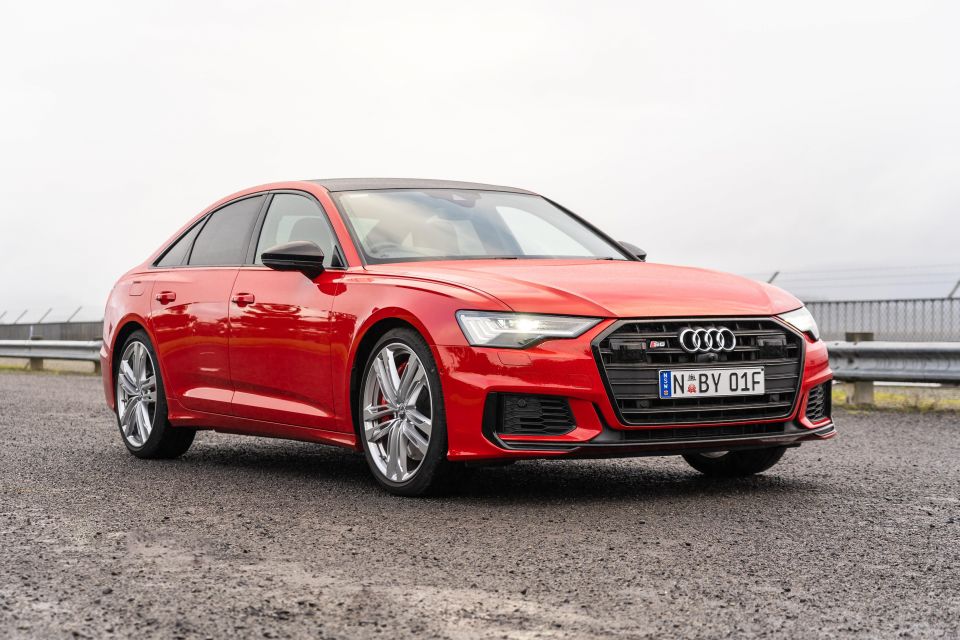
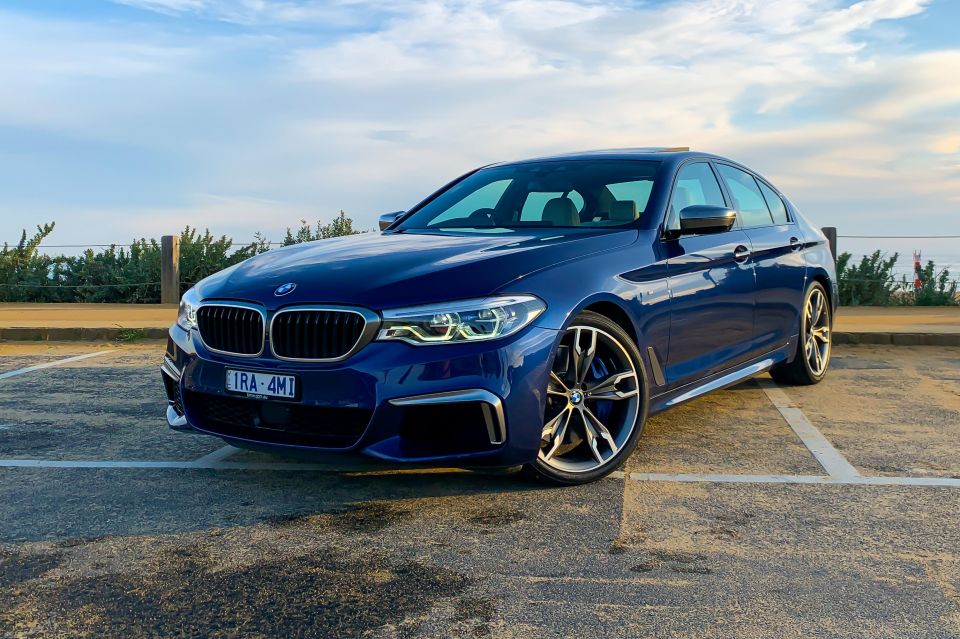
Audi S6
The Audi S6 on test here is priced at $151,600 before on-road costs, up just $1700 on the list price thanks to the addition of woven carbon dash inlays.
There are a few extra options, but they really are extras. None of them are necessities, which hasn’t always been the case on luxury cars.
Carbon Ceramic brakes ($19,000) aren’t really necessary on a car without any real track day credentials, while the Dynamic Package ($7700, adds sport differential and variable-ratio steering) falls into a similar category.
An uprated Bang & Olufsen 3D Sound system ($11,700) certainly isn’t what you could call essential, but it is one of the nicest stereos you can buy. Worth consideration, but far from critical.
BMW M550i xDrive Pure
The BMW M550i xDrive can be had for just $134,900 before on-roads in Pure guise, but the fully-loaded tester pictured here has a sticker of $149,900 before on-road costs.
None of the options packages are essential, although to get leather like the Audi’s you’ll have to pay $4500 for the Full Leather Merino package. BMW also offers an uprated surround sound system, albeit for a far more reasonable $6400.
Standard equipment in both these cars is generous. Even at well north of $100,000 before on-roads, value remains a selling point.
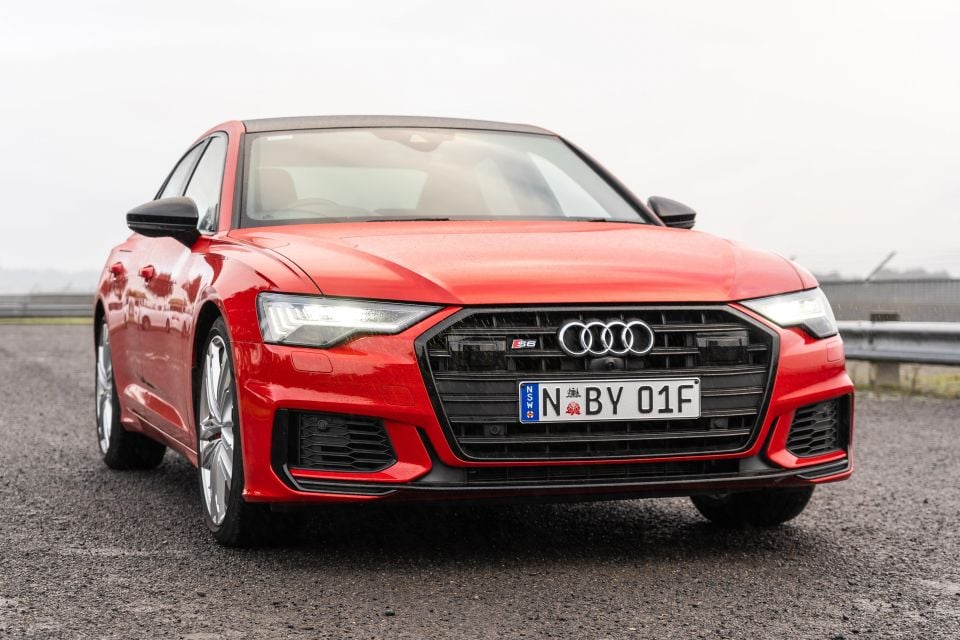

Audi S6
The Audi is arguably slightly better equipped than the BMW.
The seats are trimmed in the same leather as the A8 limousine, and the front seats are plush S-branded sports units.
There’s keyless entry and start, wireless phone charging, powered and heated front seats, a powered steering column, four-zone climate control, and a hands-free powered tailgate. Configurable ambient lighting is on hand.
Outside, the body is finished with black trim highlights as standard, and the car rides on 21-inch alloy wheels. Nine exterior colours are offered at no extra cost, but we’d recommend the Tango Red of our tester or the deeper of the two blue options.
You also get three screens in the front, led by a 12.3-inch Virtual Cockpit display in place of conventional dials.
The main infotainment touchscreen is a 10.1-inch unit angled towards the driver, sitting above another 8.6-inch screen for climate and other minor functions. Even rear passengers have a little screen for their climate.
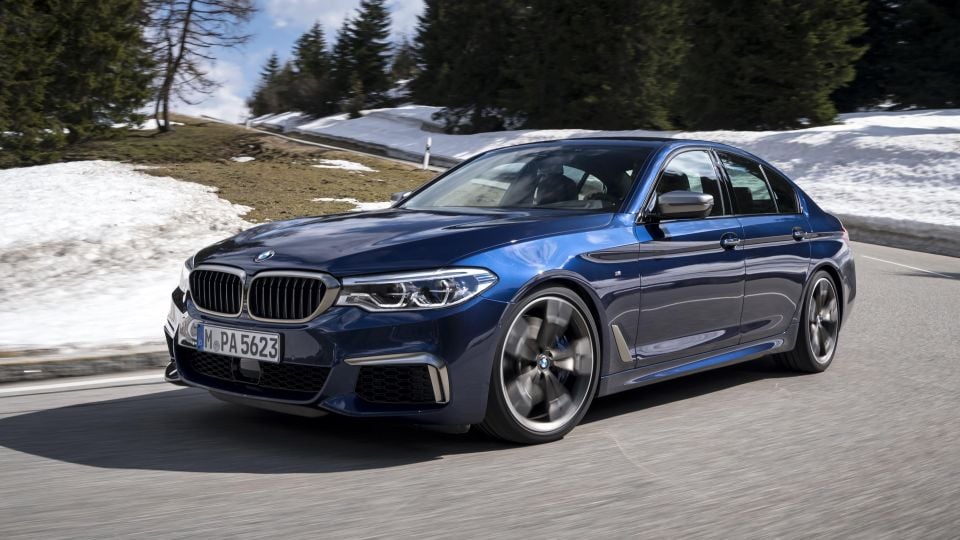

BMW M550i xDrive Pure
A lot, but not quite as much as the Audi S6 or the range-topping, non-Pure M550i model.
On the outside, there are 20-inch M light alloy wheels finished in grey, working with grey trim highlights and a subtle M rear spoiler. Gone is the chrome window finisher, replaced with gloss black.
There’s keyless entry and start, wireless phone charging, powered and heated front seats, four-zone climate control, and a hands-free powered tailgate are standard, as is configurable ambient lighting.
Unlike Audi, the folks in Munich haven’t replaced all the physical controls with screens… yet. The driver is faced with a pair of 12.3-inch displays, running the latest BMW OS7.0 software.
Our tester was fitted with a couple of options, such as a powered panoramic sunroof ($3000) and Mediterranean Blue metallic paint ($2000). The fine-wood trim inserts with Pearl Chrome highlights are a no-cost option, and match the Ivory White Dakota leather trim on our tester.
It’s worth noting the mid-life refresh for the 5 Series will be in showrooms in October, bringing fresh looks and some extra tech like wireless Android Auto and Apple CarKey, with prices for the M550i xDrive Pure and M550i xDrive rising by about $3000.
Audi S6
The Audi S6 has a five-star ANCAP safety rating, based on scores of 93 per cent for adult occupant protection, 85 per cent for child occupant protection, 81 per cent for vulnerable road user protection, and 78 per cent for safety assist.
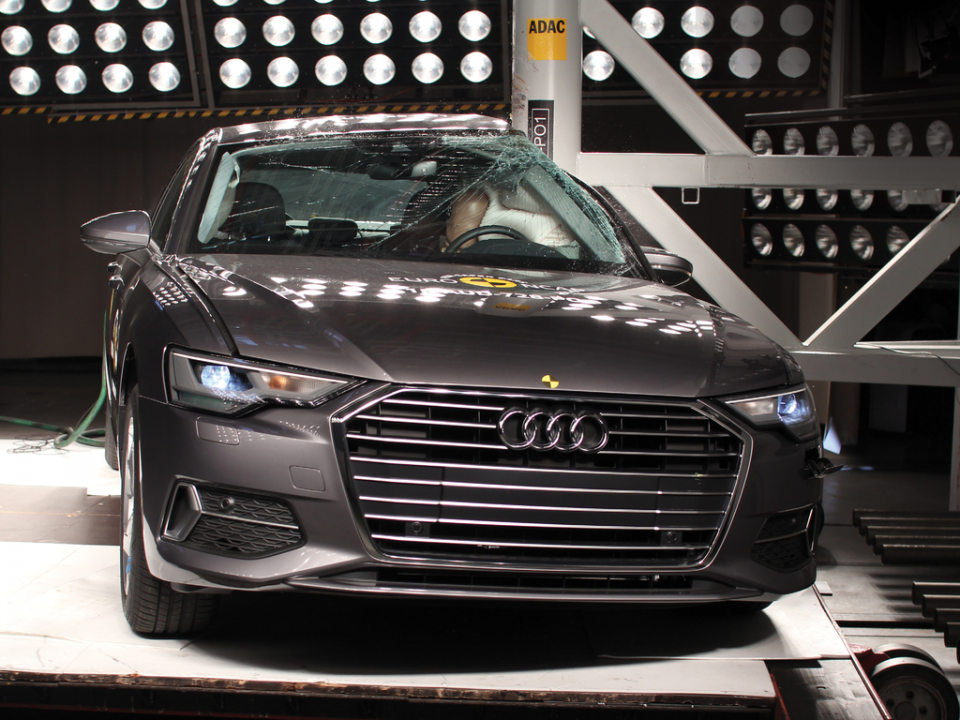
A full suite of active safety features is standard, led by autonomous emergency braking and adaptive cruise control. There’s blind-spot monitoring, lane-keeping assist, rear cross-traffic alert, collision avoidance assist, and a system that prevents you from opening the door if traffic or a bike is coming.
As a cyclist who lives in perpetual fear of copping the corner of an inattentive driver’s door in the sternum at 35km/h, that last feature is very, very welcome.
BMW M550i xDrive Pure
The current-generation 520d wears a 2017-stamped five-star ANCAP safety rating, based on tests carried out by sister firm Euro NCAP – while the rest of the range remains unrated in Australia.
In Europe, the five-star rating oddly is limited to four-cylinder variants only, including the 518d, 520d and 520i, all available in both sedan and ‘Touring’ wagon bodies abroad.
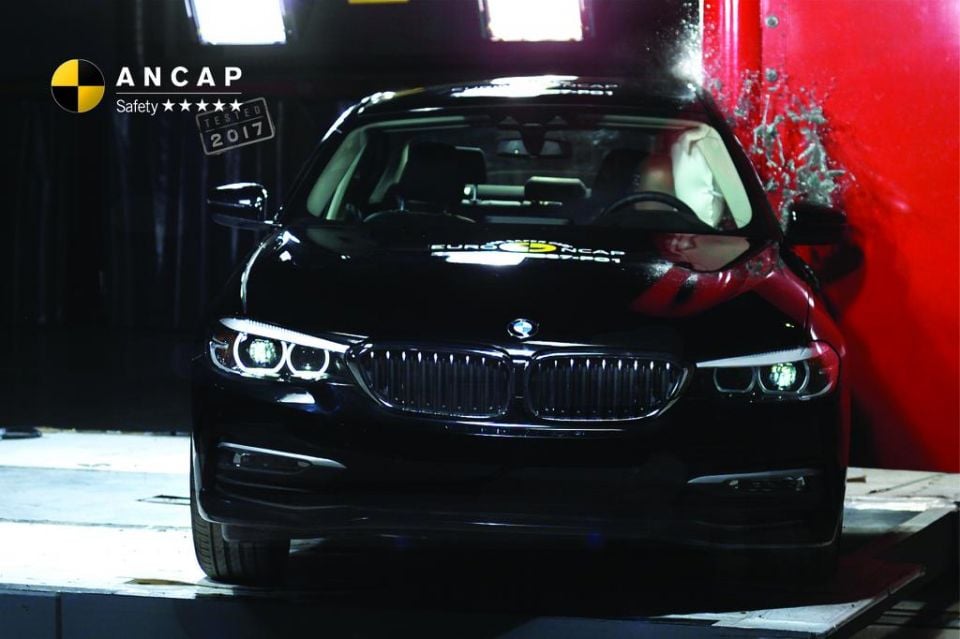
BMW’s large sedan and wagon scored 91 per cent for adult occupant protection, 85 per cent for child occupant protection, 81 per cent for pedestrian protection, and 59 per cent for safety assist.
Dual frontal, side chest, side head-protecting airbags and a driver’s knee airbag are standard. Autonomous emergency braking (AEB), lane support systems, adaptive cruise control and intelligent speed assistance are also standard on all Australian variants of the BMW 5 Series.
Audi S6
Take the rock-solid build quality for which Audi interiors are known and add in a healthy serving of high-tech glamour. That’s the recipe for the cabin of the S6.
For all its high-tech sizzle, the S6’s cabin is still fundamentally excellent. Front passengers sit in supportive, low-set sports seats with the right amount of bolstering, and the slim-rimmed steering wheel extends out into the driver’s chest.
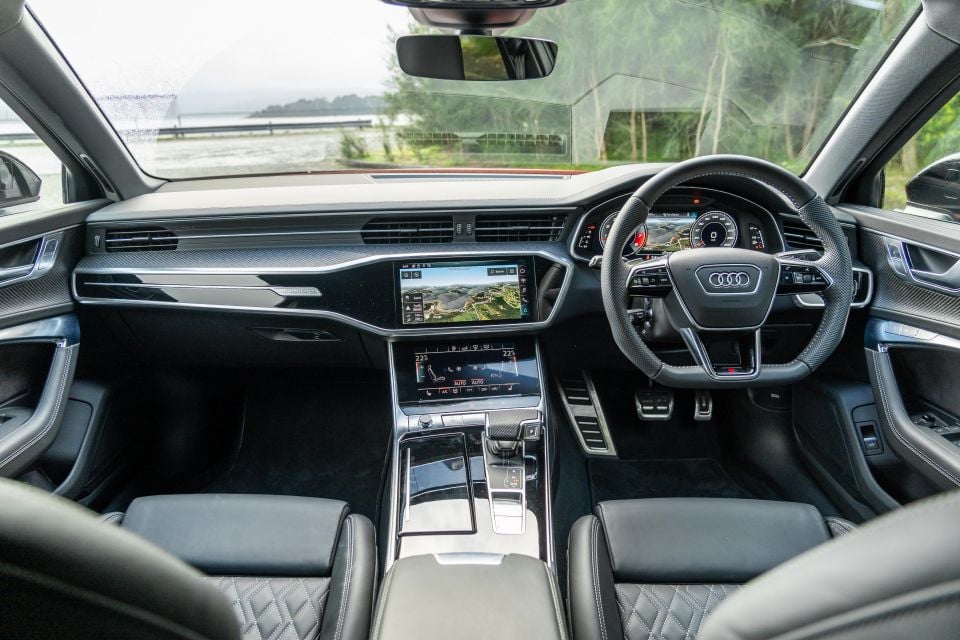
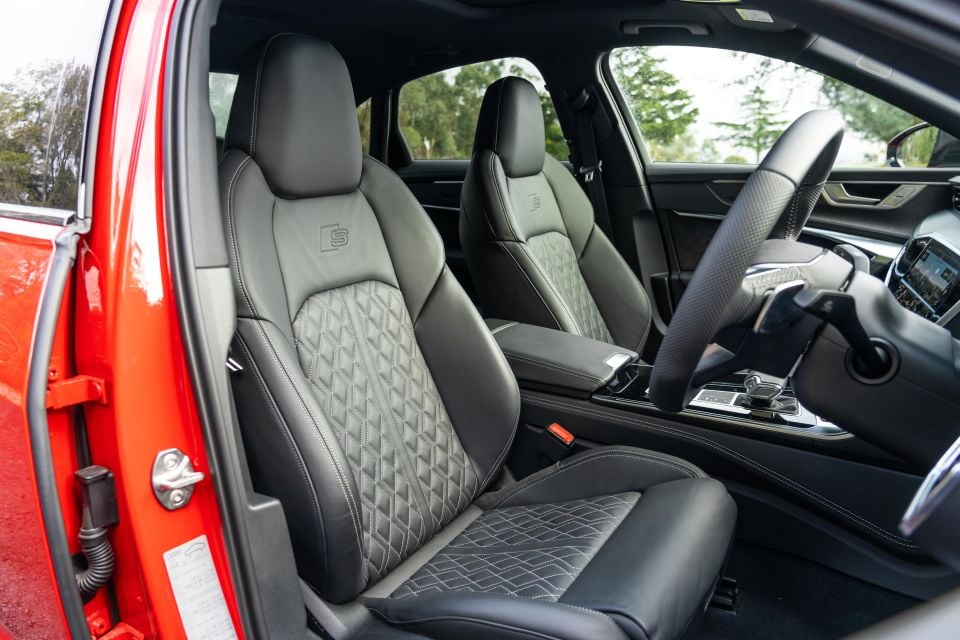
Visibility is unusually excellent for a modern car, aided by upright rear pillars and a relatively tall glasshouse. All the leather in the cabin is lovely, all the gloss black plastic feels rock solid, and everything that looks like metal probably is.
The ambient lighting isn’t garish, and the LED halos surrounding the seatbelt connectors solve a problem that’s plagued families using all three seats on the rear bench for years. It’s a modern space, something the BMW with its woodgrain trim and more conventional dashboard just isn’t.
There is a learning curve associated with the infotainment system, but for the most part it’s intuitive and snappy.
The top touchscreen is home to your mapping, phone, and media interfaces, and generally handles those functions with aplomb. All the icons are colourful and large so finding them on the move isn’t too much of a struggle, and inputs are backed by a satisfying haptic click.
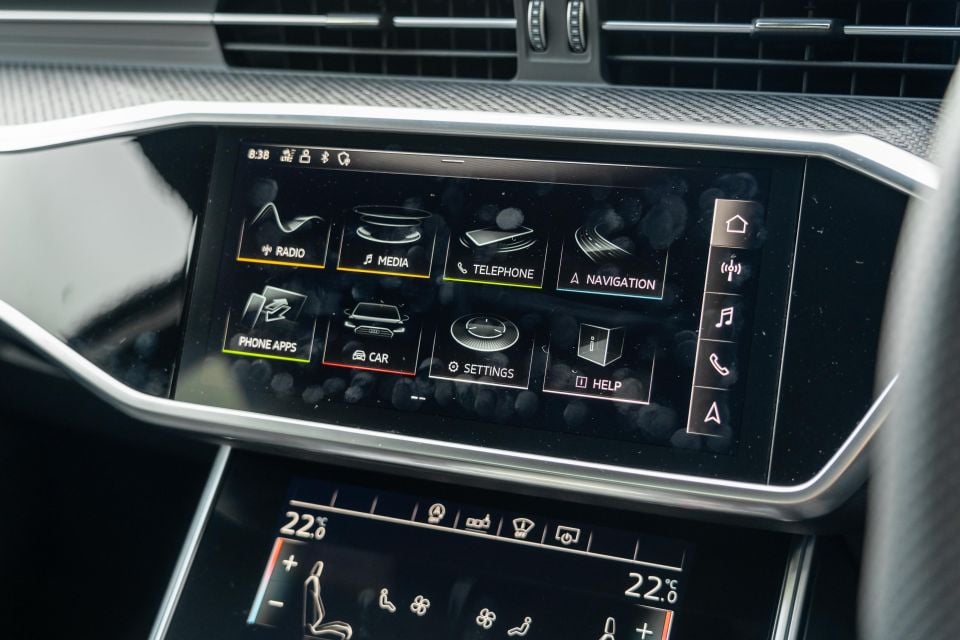
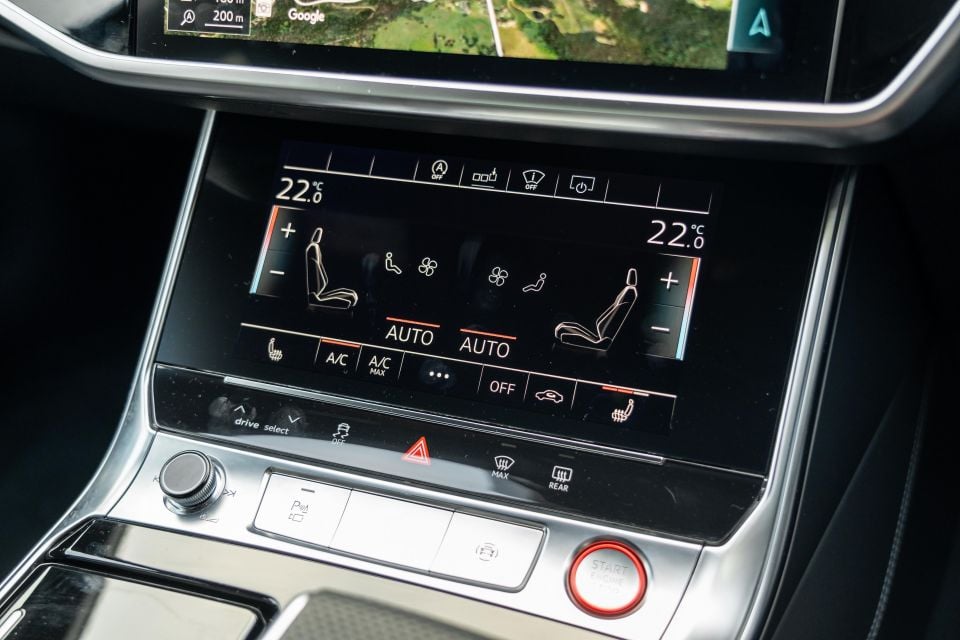
As for the bottom screen? It’s the best touch-based climate control setup I’ve used, but it isn’t without its quirks. There’s seven spare slots at the top of the display, but for some reason Audi hasn’t seen fit to put the full spread of air conditioning controls up there.
If you want to sync the driver and passenger temperatures – and if you’re a bit obsessive like me, you will – you need to open a sub-menu, which pops up on the top display, which just adds a frustrating, unnecessary extra layer of complication to what should be a simple process.
Finally, the Virtual Cockpit is a revelation. It’s still the best in the business; graphically more sophisticated than Mercedes-Benz can manage, easier to read than what BMW offers, and more polished than the (very good) screens used in lesser Volkswagen Group products.
Rear seat passengers are treated to excellent headroom, acceptable legroom, and their own climate control pod with air vents, but the Q7 or A6 Allroad wagon are better ways to lug around a family if that’s your main goal.

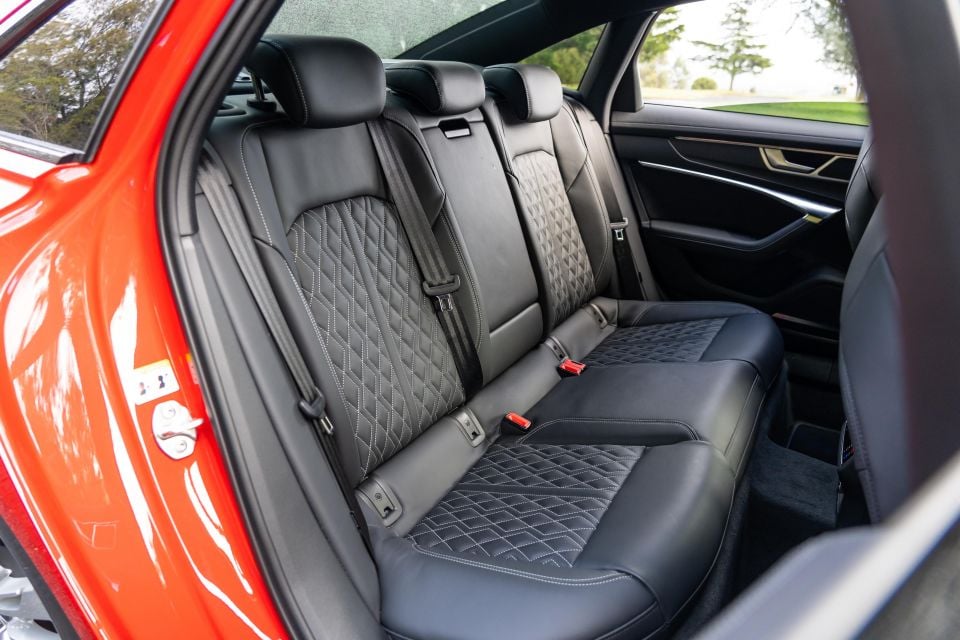
Boot space is a handy 530L, with a low loading lip and broad opening making it a practical space for those in the business of hauling things around. A more practical Avant variant is available abroad, but not Down Under.
BMW M550i xDrive Pure
After the high-tech Audi the M550i feels more familiar, with conventional climate controls angled towards the driver and a chunky steering wheel.
The beige trim and woodgrain highlights play into the less futuristic feeling. Don’t take that as a bad thing, though, because the M550i is still a really nice place to spend time.
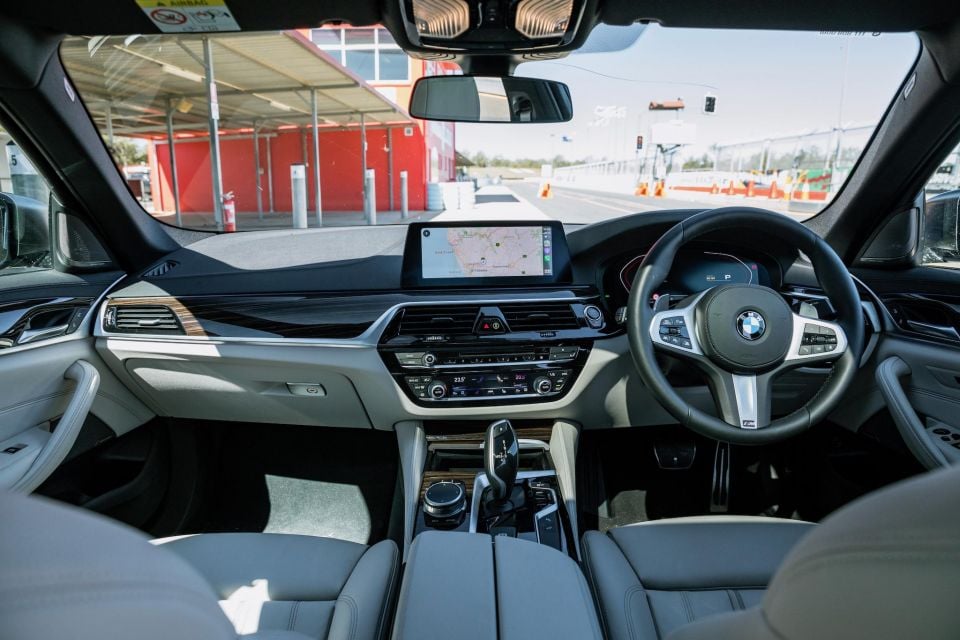
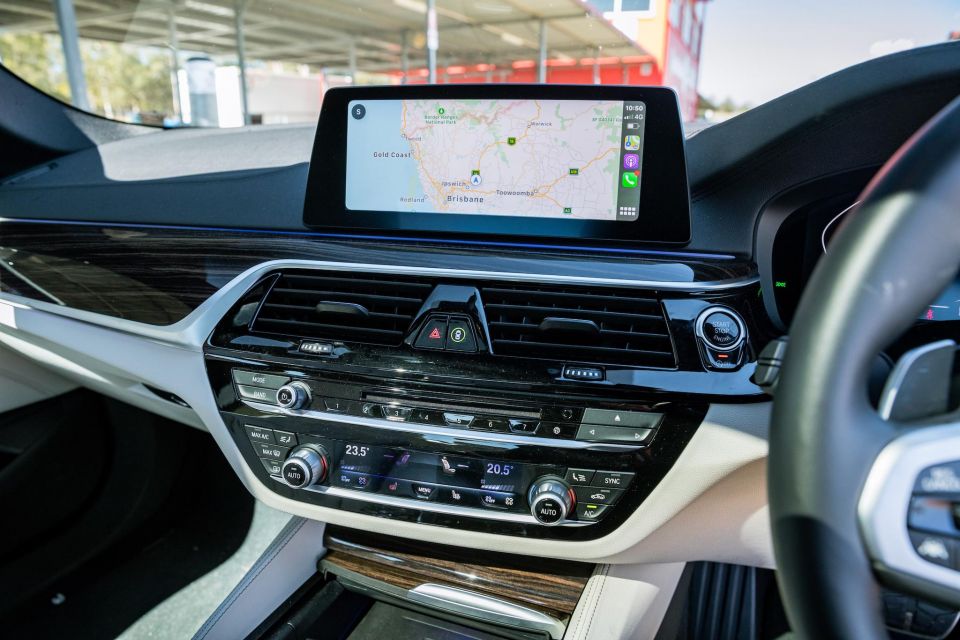
BMW still does the boring ergonomics stuff better than anyone else, with a perfect driving position for drivers of all shapes and sizes, and controls that fall easily to hand. It’s the sort of interior that makes you breathe a sigh of relief, an interior that doesn’t ask much of the driver.
Like the Audi, it also feels rock solid. Nothing squeaks, rattles, or feels scratchy, as you’d expect of a $150,000 luxury sedan.
Although the screen isn’t integrated as neatly as the Audi’s, there’s no questioning the quality of the BMW OS7.0 software in the M550i. It’s lightning quick to use, and the combination of physical and touchscreen controls is arguably the best in the business. It blows away MBUX for ease of use, and Audi doesn’t offer a rotary controller like BMW.
But the digital driver display in the BMW can’t come close to matching the polish or functionality of Audi’s latest Virtual Cockpit. From the blocky fonts to the silly anti-clockwise rev counter and the fact you can’t get a full-screen map, it’s lightyears behind the tech in the S6.

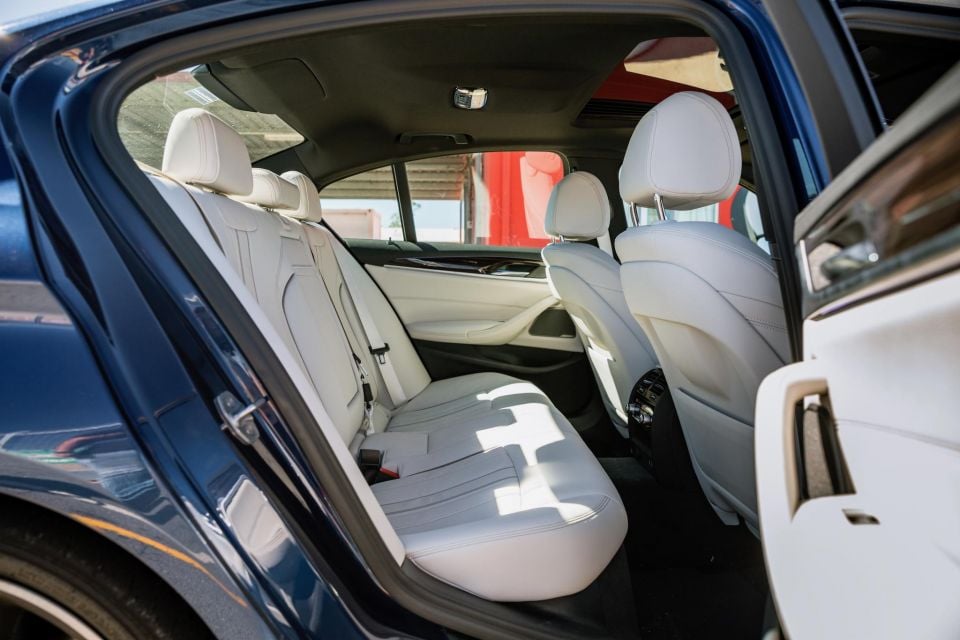
I’d still take the climate control pod in the M550i over the screen in the Audi, though. It’s not perfect, with shaped glass where normal buttons should sit, but it’s still easier to use and more logically laid out. It also frees up more storage, allowing BMW to slot a wireless charging pad under the dashboard along with cupholders.
The back seats are similar to those of the Audi, which means ample space for adult passengers. There’s climate control and air vents, bottle pockets in the doors, and a fold-down central armrest for good measure.
Under the electrically-opened boot lid is a 530L luggage area which is nicely wide and square to accommodate larger items.
| Audi S6 | BMW 550i | |
|---|---|---|
| Length | 4954mm | 4962mm |
| Width | 1886mm | 1868mm |
| Height | 1446mm | 1467mm |
| Wheelbase | 2928mm | 2975mm |
| Boot | 530L | 530L |
Audi S6
It’s a case of goodbye 4.0-litre V8, hello turbocharged and hybridised 2.9-litre V6. Losing cylinders is always sad, but there’s no questioning the numbers on offer.
Peak power is 331kW, peak torque is 600Nm. The former is on offer at 6700rpm, the latter hangs around between 1900 and 5000rpm. Claimed fuel economy is 8.4L/100km on the combined cycle.
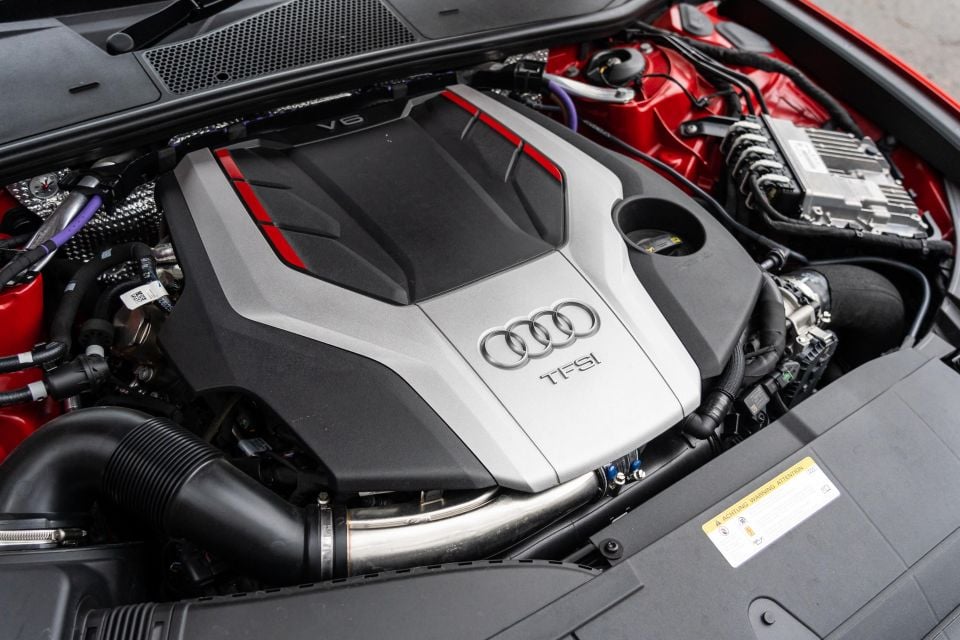
There’s plenty of trickery afoot to deliver such strong numbers from a smaller displacement, not least of which is the 48V mild-hybrid system.
Not only does it allow the engine to cut out while coasting and provide smoother start/stop in town, it drives an electrically-powered compressor – a form of e-turbo – to offer big boost from low engine speeds, when there’s not enough air flowing through the conventional turbocharger to operate effectively.
Power is put to all four wheels through an eight-speed torque converter automatic transmission. That’s right, no dual-clutch nonsense here.
BMW M550i xDrive Pure
Downsizing? Not in Munich.
Power in the M550i comes from a 4.4-litre twin-turbocharged V8 pumping out 390kW and 750Nm, the latter on tap between 1800 and 4600rpm. There’s no hybrid trickery at play here.
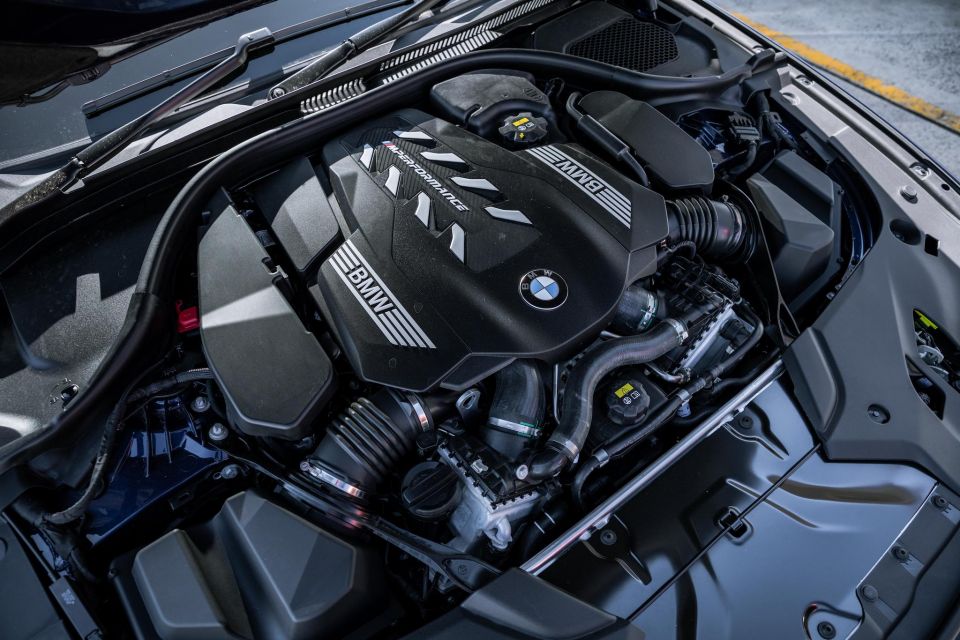
It’s sent to the road through an eight-speed ZF torque converter and an xDrive all-wheel drive system.
Fuel consumption is officially rated at 10.6L/100km on the combined cycle.
| Audi S6 | BMW 550i | |
|---|---|---|
| Displacement | 2.9-litre | 4.4-litre |
| Cylinders | V6 | V8 |
| Induction | Turbo | Turbo |
| Power | 331kW | 390kW |
| Torque | 600Nm | 750Nm |
| Drive | AWD | AWD |
| Transmission | 8-speed auto | 8-speed auto |
| Power-to-weight | 158.4kW/t | 213.6kW/t |
| 0-100km/h claim | 4.5 seconds | 3.8 seconds |
Audi S6
There’s an understated excellence about the way the Audi goes about its business. It’s very polished. Oh, and it’s very fast.
A trip to the drag strip revealed it’ll repeatedly pull 4.4-second runs to 100km/h, making this one very accelerative big sedan.
Not that you’d know it most of the time. Although it fires with a flourish and the exhaust barks on medium- and full-throttle shifts, for the most part it’s quite demure and buttoned down.
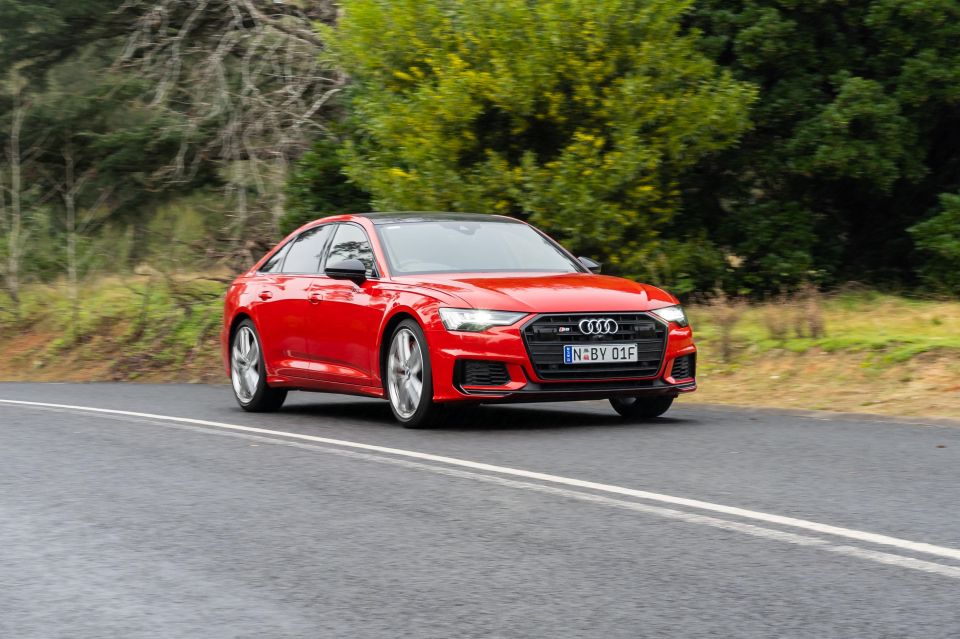

Where expert car reviews meet expert car buying – CarExpert gives you trusted advice, personalised service and real savings on your next new car.
The ride is excellent at low speeds – and not just for a car riding on 21-inch wheels. The S6 soaks up potholes like they’re not even there. It floats over minor lumps and bumps, keeping all but the biggest of hits from sneaking into the cabin.
It’s never loose or floaty though, with tight body control regardless of drive mode. Whatever’s going on under the skin is fiendishly clever, no question.
With light steering and a gentle throttle tune, Comfort mode is perfect for day-to-day driving. Lean harder on the accelerator and the S6 shows an impressive turn of speed, but it’s happy just tooling around. It’s effortless.
Even in Sport mode, with the throttle sharpened, the eight-speed transmission holding a lower gear, the steering in a meatier, more determined state of tune, and the suspension in a firmer mode, it’s completely bearable on most Melbourne roads.
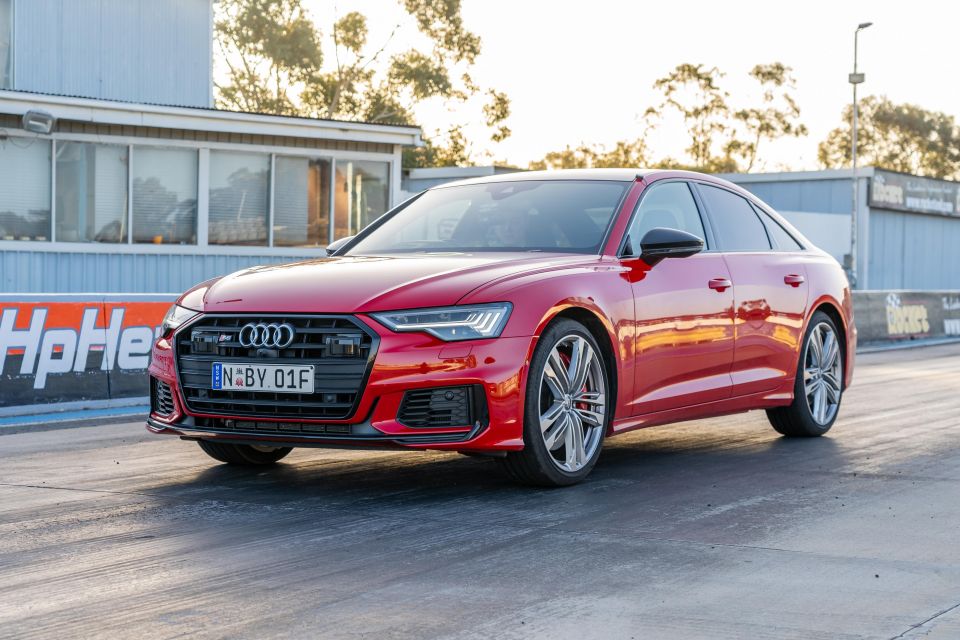
Handling is predictable, and traction is plentiful. There’s nothing in the way of gritty road feedback, but the steering is direct and the nose generally goes where you point it. It’ll always put its power down too, no matter how biblically wet the weather.
Lean on the throttle and it picks up almost instantly, electric compressor spooling to plug any gaps in the torque delivery from the turbo’d petrol engine.
When it isn’t adding to the performance, the 48V system is helping the engine work more efficiently. Whenever you lift off the throttle it allows the engine to cut out – and if it knows there’s a speed limit change or major intersection coming up, the throttle will pulse and encourage the driver to lift off so you can coast more efficiently to a stop.
The eight-speed automatic pairs well with the new engine, exhibiting the sort of smooth low-speed behaviour you’d expect of a torque converter, coupled with impressively snappy shifts on the move.
BMW M550i xDrive Pure
The M550i is less velvet sledgehammer, more sledgehammer. The steering is heavier than in the S6, and it doesn’t float over lumps and bumps in the same way.
But it’s also more characterful. The engine has a bassy, woofly growl to it compared to the slightly anodyne V6 in the Audi, and the heavier steering and slightly firmer ride give it a more pugnacious feeling on the road. It’s backed up by the performance which, even alongside a fast car like the S6, is properly eye-opening.
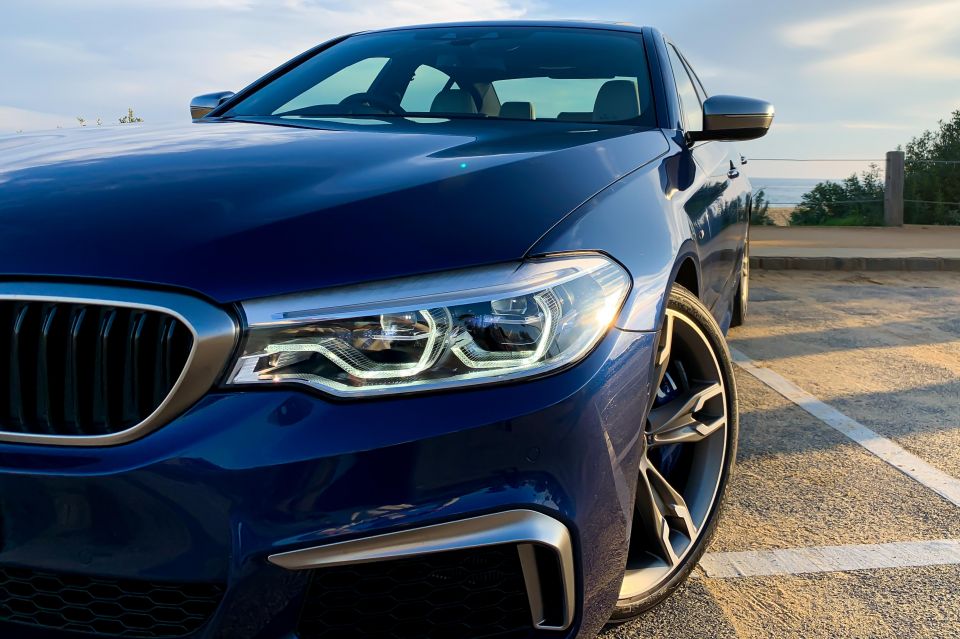
The M550i feels every bit a sub-four-second car to 100km/h when you open it up, absolutely hoovering up the open road. It’s a powerhouse, and I love it.
Despite the Porsche 911-bothering performance, the M550i is more of a high-performance grand tourer. There’s grip aplenty from the Bridgestone Potenza S007 tyres and the xDrive system means you can put most of the engine’s torque down even in the wet, but Atko’s lap of Queensland Raceway revealed the M5 Competition is a better bet for track day warriors.
Of course, track attacks aren’t really the point here, and all the things that make the M550i great at full noise also make it a pussycat in town.
Even though the eight-speed automatic shuffles to the tallest gear possible in search of efficiency, the surfeit of torque on offer from just off idle means you’re never left waiting long for a healthy shove in the back.
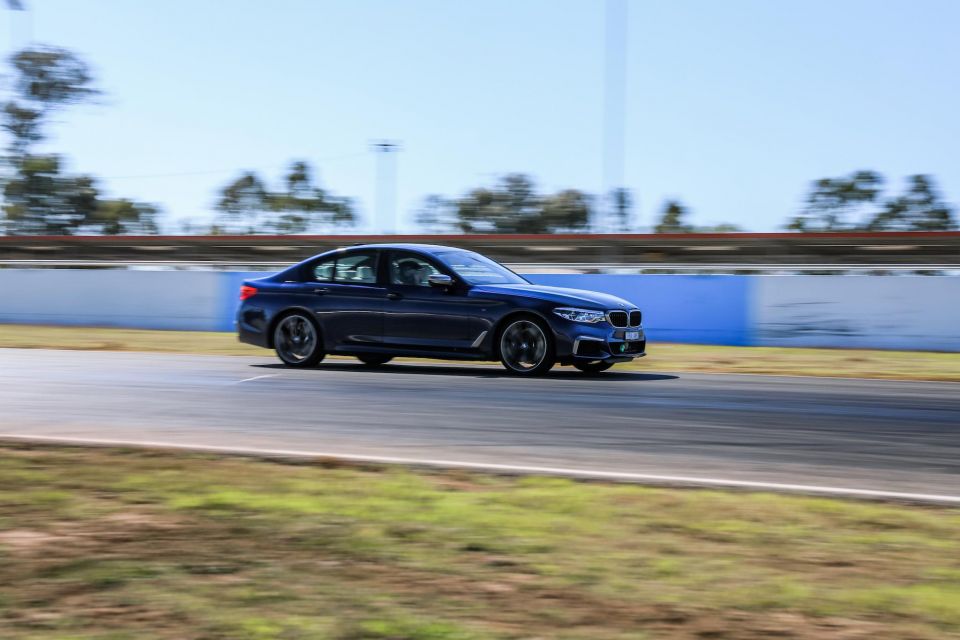

The ride isn’t quite as smooth as that of the S6, but it’s not far behind. Both of these cars are well suited to life in the city, floating over speed bumps and potholes without rattling your fillings loose.
With a full suite of cameras and sensors on hand, the lack of rear-wheel steering in this base M550i xDrive Pure isn’t too keenly felt in tight parking spaces and garages.
Audi S6
The S6 demands 98 RON premium unleaded fuel, which ups your running costs.
Unfortunately, Audi hasn’t followed Mercedes-Benz or Volvo in moving to a five-year warranty, instead running with a three-year, unlimited-kilometre coverage period.
Audi maintains its owners aren’t worried about the three-year warranty – as does BMW, which also hasn’t shifted – but we’d be very, very surprised if anyone turned down two more years of peace of mind and the associated lift in resale value.
Audi also offers a three-year service plan for $2350 and five-year plan for $4110.
BMW M550i xDrive
BMW offers inclusive service plans which make ownership surprisingly affordable. The ‘Basic’ package covers you for up to five years or 80,000km – whichever comes first.
All 5 Series models are available with the Basic package for $1850, which averages out to $370 per year for the first five years. That’s cheaper than some mainstream brands.
There’s also a ‘Plus’ package which covers consumable items like brake pads, brake discs, and windscreen wiper blades where applicable, which asks for $5540 for the same period.
The 5 Series is covered by BMW Australia’s three-year, unlimited-kilometre warranty, and drinks 98 RON premium unleaded.
It’s a cliche to say there are no losers here, but… there are no losers here.
Both these cars are polished executive expresses, and both take distinctly different approaches.
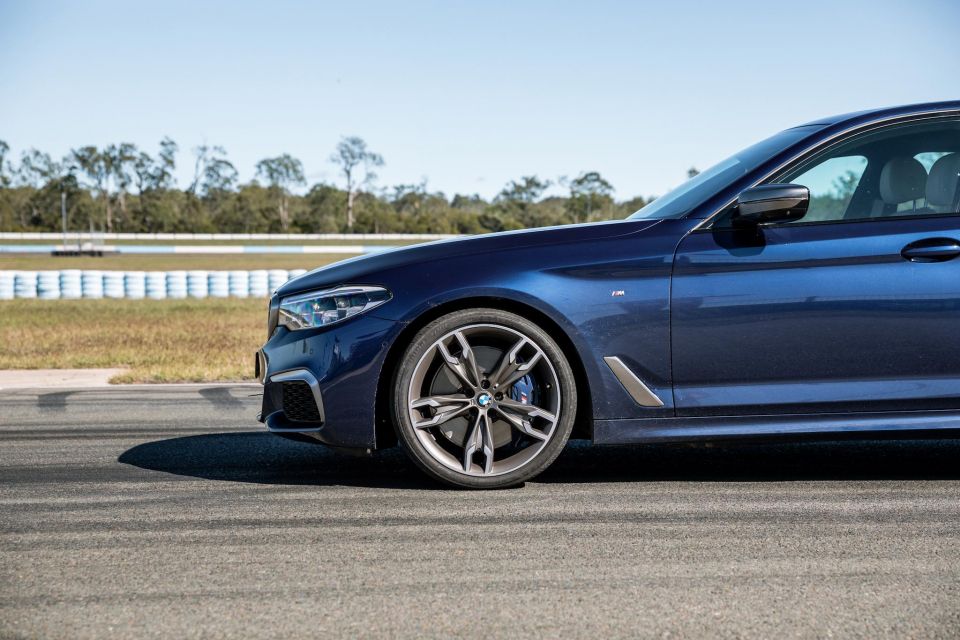
Although Audi deserves credit for innovating with the S6 and its high-tech cabin, the BMW would be getting my money.
It lacks the sizzle of the Audi inside, and the hybrid powertrain in the S6 is more modern than the twin-turbocharged V8 in the BMW. But the BMW has a twin-turbocharged V8. There’s no getting around that fact.
The throaty engine and its effortless performance combined with the slightly more tied-down way it drives make it the more characterful, appealing performance sedan.
Share your thoughts with us in the comments below!
Scott Collie is an automotive journalist based in Melbourne, Australia. Scott studied journalism at RMIT University and, after a lifelong obsession with everything automotive, started covering the car industry shortly afterwards. He has a passion for travel, and is an avid Melbourne Demons supporter.
Share your thoughts and write a review of a car you own and get featured on CarExpert.


Damion Smy
30 Minutes Ago


Damion Smy
2 Hours Ago


Matt Robinson
5 Hours Ago


Damion Smy
5 Hours Ago


Damion Smy
19 Hours Ago


Damion Smy
20 Hours Ago